
What does a big client look like to you? If you ask that question to five creatives in the same industry, you’ll likely get very different responses from each. Some may think of their breakthrough client as a big brand name like Nike, Disney, Toyota — easily recognizable logos and names. For others, a big client can be one that brings in three times as much monthly recurring revenue as their average, normal client.
Whatever the case may be, knowing who you want your big client to be is only half the battle — the other half is actually landing the deal. I reached out to three agencies who’ve had crazy success from landing their first big client and asked them exactly how they did it! Let’s dive in.
Personalize your outreach and craft strategic pitches
Speak Creative is a nationally-known digital agency that specializes in web design, app development, digital marketing, and video production. Their team approached getting a bigger account in a unique way: pursuing several big clients within their target markets, humanizing their outreach efforts, and crafting strategic pitches.
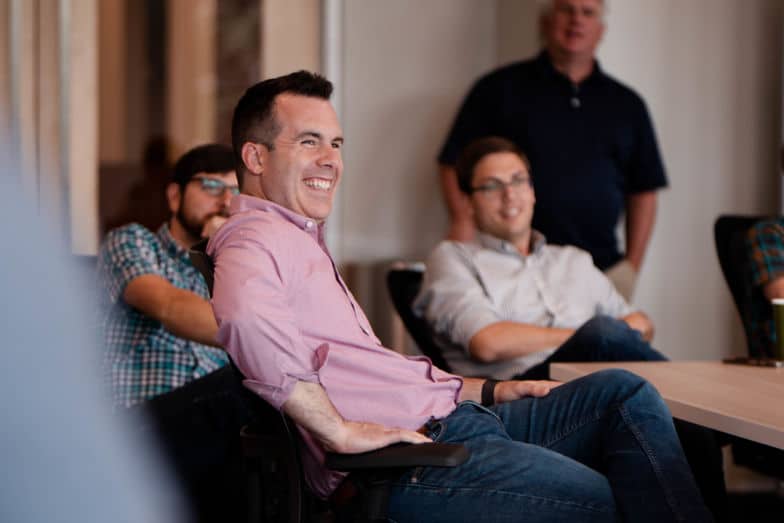
“There are some obvious big fish, so we strategically introduce ourselves through meaningful outreach. Rather than sending emails or trying to make cold calls, we start our outreach sequence by mailing branded, local swag and a handwritten note. Everything gets packaged in a highly-branded container, so (we hope) the overall effect is professional and impressive. Sometimes that’s all that’s needed for the first conversation. Other times, it’s the thing that makes our more traditional outreach via email or phone more effective — it opens the door a little bit because there’s warmth and enthusiasm.” –Matt Roberts, VP of Marketing and Sales
They approach pitching to new clients in a no-stress, easygoing way — with a simple conversation to several different divisions of the same company.
“Marketing is the obvious place to start, but those folks get pitched all the time. There are departments (beyond marketing) all throughout most organizations who have communication needs. These are great places to get experience with a company or big brand.” –Matt Roberts
For the team, they know that a perfect polished pitch is only part of the equation; they also attribute their success on timing and persistence.
“If we’re reaching out with a great pitch to one group, it’s statistically improbable that we’re going to get a response from that group, even if our pitch and brand presence are top notch. If we reach out to 10 or 20 groups, we’re much more likely to have someone who says that they’d like to have a conversation about what we can do and invite us into their problem and needs.” –Matt Roberts
While landing a big client was important, it wasn’t the end all be all.
“It’s exciting and it feels really good to be able to show that you do business with some great brands. However, we value building a portfolio of clients that keeps us diversified. If we get too dependent on a single client or a small group of clients, it can change our culture.”
They value, more than anything, a healthy work-life balance. And in the cases where they need additional hands for a project, they make sure to hire intentionally and strategically.
“We don’t go on a hiring spree or drastically adjust compensation. Of course, if we need more talent to handle the project or to continue serving our other clients, we’ll make sure we’ve got the right mix of folks, but we try to be cautious. The big deals are fun and exciting, but we get a lot of satisfaction in the smaller, everyday wins as well. It keeps us from falling into the trap that a big client or a big project is going to solve our problems.”
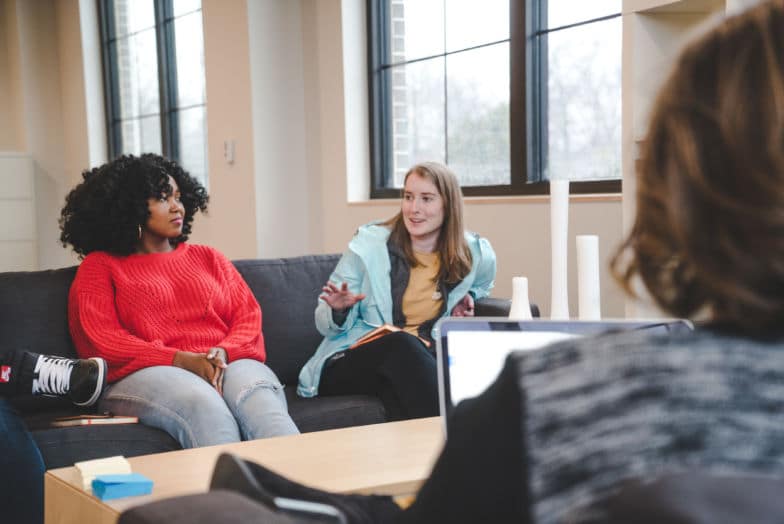
While timing and persistence are key factors, the team didn’t land their first big client by chance, they made an actionable plan to work their way up the ladder.
“I’d recommend looking at groups you want to work with as a 2-year goal. Then start working with smaller, more local groups that might have some of the same needs or that the larger group would recognize as an up-and-coming player. Build your portfolio to show that you can do business with folks in or near the same industry, then start to pitch the organization directly. Sometimes you get lucky — a key contact with one of the smaller organizations might get picked up by the larger organization, and you’ve suddenly got an ally. The biggest thing is to not see landing a big client as some lottery that you hope pays off. Put in the work and create your own luck.”
Speak Creative is a proud Flywheel customer which means their team uses our managed WordPress hosting platform to manage their client’s WordPress sites and they know Flywheel always has their back with 24/7 support whenever they need it.
Speak Creative is also part of Flywheel’s Agency Partners Program, a program dedicated to helping agencies earn monthly recurring revenue, helping them scale their agency. Although Flywheel didn’t help Speak Creative land their first big client, the team has helped them with complex clients ever since.
“We made the switch to Flywheel in the past year and a half, and they’ve been a tremendous asset for us as we’ve looked to host and support some pretty big organizations with complex needs.”
To learn more about Speak Creative and the work they do, follow them on Instagram!
Be confident in your proposal, the design process, and every step of the way
Grain & Mortar is a strategy and design studio and they specialize in brand creation, custom websites, and illustration. Their first “big name” client was Google and the project was designing in-depth slide presentations for an international conference they were hosting called Google Cloud.
Unlike most agencies, their big client reached out and found them. Google saw the work on their site and sent an email requesting to hop on the phone to learn more about the agency. (Don’t knock the importance of contact forms on your site!)
For Grain & Mortar, creating and submitting an outstanding proposal was a key part of the process.
“We spoke with the project lead at length about the project’s needs, then put together a proposal including cost, timeline, and portfolio examples.”
Learn more about what questions to ask clients before starting a web design project.
Design aesthetic (based on the team’s portfolio) was one part of the equation in the client saying “yes” — another part was presenting everything confidently.
“The client already knew they liked our design aesthetic from looking through our portfolio, so once they reached out, it was all about making sure they knew we were competent enough and professional enough to handle their important project. Presenting our design process and workflow confidently was key, as was assuring them we could meet their deadlines.”
Grain & Mortar’s business changed for the better after working with their first big client.
“We continued to do work with Google, and have since worked with Facebook, Twilo, Twitch, and Teennick. Doing work for large tech companies gives instant credibility.”
Grain & Mortar did find a few challenges when working with this client, mostly due to the client’s complex industry.
“Sophisticated clients, specifically in the technology industry, are always a challenge. One unique challenge in working with Google specifically was learning their language and jargon. Back in 2014, we hadn’t worked with many companies in Silicon Valley up until that point, so learning how to speak the language and understand their culture was crucial. Although challenging, it accelerated our learning at a very fast pace.”
In addition to the industry, working with a big client usually means working with a bigger team, which became a challenge in itself.
“Generally, large companies will have large marketing teams and there’s always a lot of stakeholders to satisfy. In many ways, design is subjective, and we have honed our skills in proving our work through rationales and data to back up our design decisions.”
Is your agency ready to land your first big client? Davey Owens, Flywheel’s paid marketing strategist, sits down Kristin DeKay, the co-founder and operations director of Grain & Mortar to chat about how to get big clients.

Learn more about how they land big clients here.
Although Grain & Mortar had clients before this one, the team learned a lot from working with this big client.
“We learned how to execute a project at a much higher level. We gained experience working with large internal marketing and design teams that are extremely focused on their product. We got better at managing a large project in a short period of time and delivering what we said we would deliver.”
Finally, we asked, “What one piece of advice would you give to other agencies wanting to land their first big client?”
“Just do great work and get it out there on the internet. Use every opportunity you have to create projects that are excellent, case study-worthy work. Be honest and kind to every person you meet – you never know where they might end up. They may hire you for a project one day!”
To see more of Grain & Mortar’s work, check out their Instagram account!
Step out of your comfort zone and put yourself in challenging situations
DayCloud Studios is a brand strategy and digital advertising agency that specializes in web design, copywriting, social media, UX and UI, videography, and content creation. The agency was founded by Liz Hunt (now Principal & Creative Director) and the agency’s first client was Lutz.
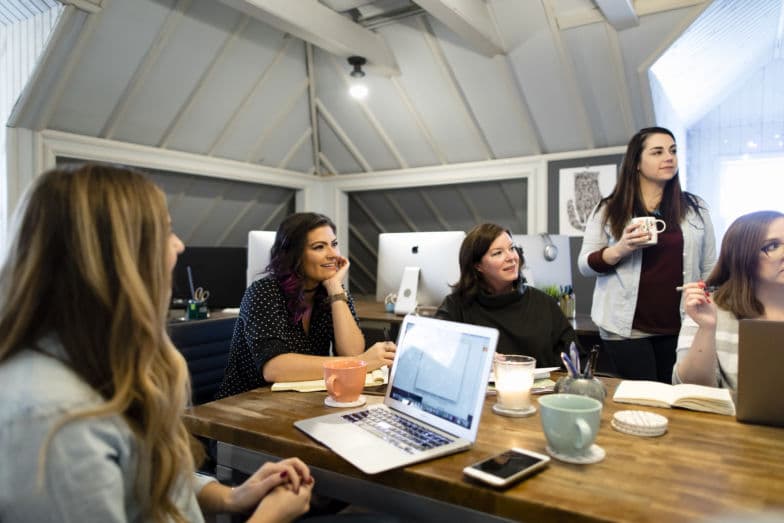
At the time, Liz had just started freelancing on her own when she found her first big client in a common way: a networking event.
“I met one of the partners at a random Silicon Prairie networking event. He handed me his business card and we shook hands. The max amount of time we chatted was 60 seconds. I have no idea how he remembered me.”
If you ask a few agencies what’s most important in landing a big client, most of them will say the pitch. A pitch can make or break whether you sign on a client — or not.
“It was more of an interview style. I shared my work (this was back when portfolios were still printed!) and let them know my hourly rate. We did a trial project to see if we worked well together but it was an insane deadline. I designed an entire website for them in one weekend. (I wanted the work so I got it done!)”
You can present a perfect pitch and a client still might say no, not because you did anything wrong, but because your values might differ from theirs or the project might not be a good match. In this case, Lutz was extremely impressed with Liz’s work ethic, which set her apart.
“They liked my work and they could tell I was hungry.”
DayCloud started as a one-woman team, so for every client Liz signed on, she had to be the account executive, the designer, the developer, everything! Signing on her first big client, she definitely had some feelings:
“It was just me at the time. It felt scary and exhilarating all at once! I had no idea what I was doing but I was getting up everyday choosing to do something.”
For many agencies, once they sign on a big client, their business transforms. They have more revenue coming in, which means they can oftentimes sign another big client after that one or add more employees to the team to help with workflow and bandwidth. For Liz, both of those happened at DayCloud.
“I added my largest client ever after that. I began adding employees to my team. Instead of freelancing by myself, I became a “we.” What really changed for me during my time with this client though was my mindset about my business. I began to realize that I wanted to build a business and not be a solopreneur. I wanted to run and operate a team of creative people rather than do this on my own. So, that created a big shift in my company in many ways as well.”
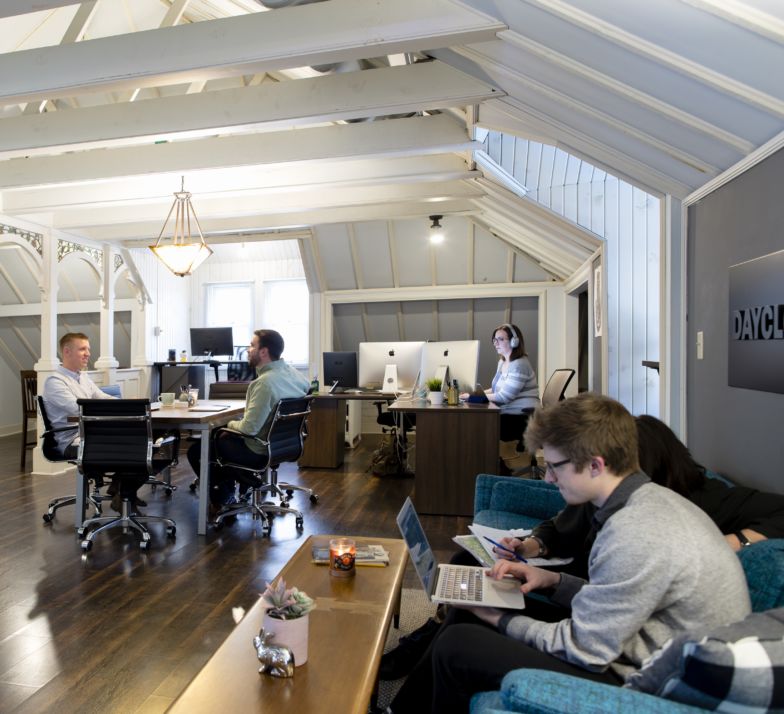
When working with big clients, there are always challenges you have to work through, whether that’s managing client conflict or just the project difficulty.
“That was the first time I built a client’s website on my own. I’d assisted on website’s at my previous firms but had never done the whole process on my own — leading the client, leading the development team, leading the charge from beginning to end. But I did with that client! I would show up to meetings (literally) shaking and terrified out of my mind because I was so anxious. But I kept showing up. In the end, we created a great product for the client that they loved!”
After working with more and more clients, you tend to always learn something or have a new takeaway. For Liz, it was getting out of her comfort zone.
“One of the biggest things I learned from that process was that the only way you grow as an individual and as a company is get used to uncomfortable situations. If you’re always comfortable, you’ll always do what you’ve always done. But if you step out to try something that makes you, in my case, wildly uncomfortable, you’ll learn something. You’ll grow. You’ll see a new side of yourself you never knew existed. You’ll find a strength inside of you you never knew was there. It’ll change your perspective about what you’re capable of. But first, you have to step out of “the comfortable”.
Join these agencies: Learn how to land your first big client
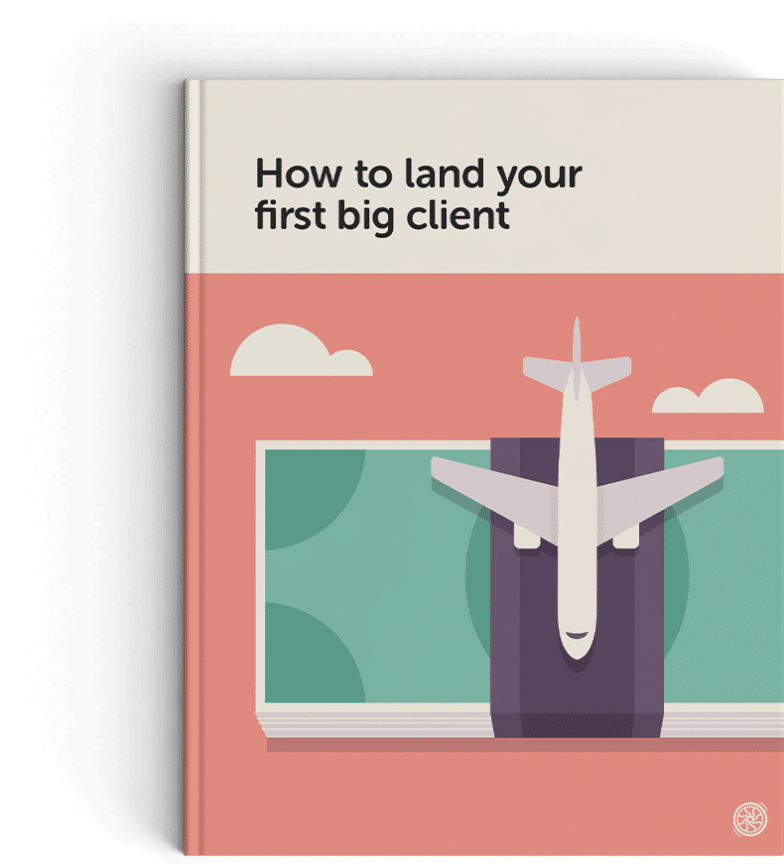
Landing your first big client is a milestone, an achievement, a stretch goal that all agencies have. It’s a symbol of success after working with smaller clients and building your portfolio. In this guide, we’ll show you all the things you need to do to land your first big client. Download it for free below.


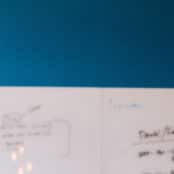



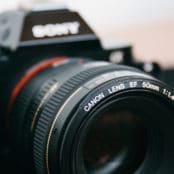
Comments ( 434 )
Peterexima
August 20, 2025
where to buy generic viagra online: SildenaPeak - SildenaPeak
RichardSog
August 20, 2025
Tadalify: cialis side effects a wife’s perspective - Tadalify
DanielFal
August 20, 2025
https://kamameds.shop/# Men’s sexual health solutions online
Elijahded
August 20, 2025
order generic cialis online 20 mg 20 pills: how long before sex should you take cialis - Tadalify
Binance账户创建
August 20, 2025
Thanks for sharing. I read many of your blog posts, cool, your blog is very good. https://www.binance.info/ES_la/register?ref=T7KCZASX
RobertSop
August 20, 2025
SildenaPeak [url=http://sildenapeak.com/#]how to buy viagra no prescription[/url] SildenaPeak
RichardSog
August 20, 2025
SildenaPeak: cheap viagra 100 - generic viagra usa
Peterexima
August 20, 2025
Tadalify: Tadalify - cialis experience reddit
Elijahded
August 20, 2025
KamaMeds: Affordable sildenafil citrate tablets for men - Kamagra reviews from US customers
RobertSop
August 19, 2025
cialis over the counter in spain [url=https://tadalify.shop/#]how long does it take for cialis to take effect[/url] cialis sell
RichardSog
August 19, 2025
where can i buy sildenafil 100mg: SildenaPeak - SildenaPeak
DanielFal
August 19, 2025
https://sildenapeak.com/# buy sale viagra
Peterexima
August 19, 2025
Online sources for Kamagra in the United States: Men’s sexual health solutions online - KamaMeds
Elijahded
August 19, 2025
cialis indications: Tadalify - Tadalify
RichardSog
August 19, 2025
Non-prescription ED tablets discreetly shipped: Fast-acting ED solution with discreet packaging - Kamagra oral jelly USA availability
RobertSop
August 19, 2025
viagra online cheap india [url=http://sildenapeak.com/#]viagra online generic canada[/url] cheapest sildenafil 50 mg
Peterexima
August 19, 2025
Sildenafil oral jelly fast absorption effect: Men’s sexual health solutions online - Online sources for Kamagra in the United States
Elijahded
August 19, 2025
best generic viagra brand: SildenaPeak - generic viagra brands
RichardSog
August 19, 2025
Kamagra oral jelly USA availability: Non-prescription ED tablets discreetly shipped - Fast-acting ED solution with discreet packaging
DanielFal
August 19, 2025
https://kamameds.com/# Non-prescription ED tablets discreetly shipped
Peterexima
August 19, 2025
Tadalify: Tadalify - cialis tadalafil 20mg price
RobertSop
August 18, 2025
Kamagra oral jelly USA availability [url=https://kamameds.shop/#]Kamagra oral jelly USA availability[/url] Affordable sildenafil citrate tablets for men
Elijahded
August 18, 2025
great white peptides tadalafil: Tadalify - Tadalify
RichardSog
August 18, 2025
when does tadalafil go generic: buy cialis usa - how many 5mg cialis can i take at once
Peterexima
August 18, 2025
KamaMeds: Men’s sexual health solutions online - Kamagra oral jelly USA availability
Elijahded
August 18, 2025
SildenaPeak: SildenaPeak - where to buy sildenafil online with paypal
RobertSop
August 18, 2025
buy sildenafil 50mg [url=http://sildenapeak.com/#]SildenaPeak[/url] sildenafil 100 capsule
RichardSog
August 18, 2025
Kamagra reviews from US customers: Men’s sexual health solutions online - Compare Kamagra with branded alternatives
DanielFal
August 18, 2025
http://tadalify.com/# Tadalify
Peterexima
August 18, 2025
Tadalify: Tadalify - overnight cialis delivery
Elijahded
August 18, 2025
Non-prescription ED tablets discreetly shipped: Non-prescription ED tablets discreetly shipped - Compare Kamagra with branded alternatives
RobertSop
August 18, 2025
Online sources for Kamagra in the United States [url=http://kamameds.com/#]KamaMeds[/url] KamaMeds
RichardSog
August 18, 2025
Tadalify: generic cialis 5mg - Tadalify
Peterexima
August 17, 2025
SildenaPeak: SildenaPeak - SildenaPeak
Elijahded
August 17, 2025
Kamagra oral jelly USA availability: Fast-acting ED solution with discreet packaging - Non-prescription ED tablets discreetly shipped
RichardSog
August 17, 2025
SildenaPeak: how much is the generic viagra - SildenaPeak
RobertSop
August 17, 2025
Tadalify [url=https://tadalify.com/#]Tadalify[/url] cialis tadalafil 20mg tablets
DanielFal
August 17, 2025
https://sildenapeak.com/# best sildenafil
Peterexima
August 17, 2025
over the counter cialis 2017: Tadalify - cialis 5mg best price
Elijahded
August 17, 2025
us pharmacy prices for cialis: Tadalify - tadalafil 5mg once a day
RichardSog
August 17, 2025
SildenaPeak: how to viagra - SildenaPeak
RobertSop
August 17, 2025
KamaMeds [url=http://kamameds.com/#]Sildenafil oral jelly fast absorption effect[/url] Non-prescription ED tablets discreetly shipped
Peterexima
August 17, 2025
Fast-acting ED solution with discreet packaging: Sildenafil oral jelly fast absorption effect - Compare Kamagra with branded alternatives
Elijahded
August 17, 2025
Kamagra reviews from US customers: Non-prescription ED tablets discreetly shipped - Compare Kamagra with branded alternatives
RichardSog
August 16, 2025
Non-prescription ED tablets discreetly shipped: KamaMeds - Men’s sexual health solutions online
DanielFal
August 16, 2025
https://sildenapeak.com/# SildenaPeak
RobertSop
August 16, 2025
buy cialis no prescription [url=https://tadalify.com/#]tadalafil 10mg side effects[/url] cialis no perscription overnight delivery
Peterexima
August 16, 2025
Kamagra reviews from US customers: KamaMeds - Compare Kamagra with branded alternatives
Elijahded
August 16, 2025
ED treatment without doctor visits: Kamagra oral jelly USA availability - Fast-acting ED solution with discreet packaging
RichardSog
August 16, 2025
Tadalify: cialis san diego - Tadalify
Peterexima
August 16, 2025
Tadalify: Tadalify - Tadalify
Elijahded
August 16, 2025
Kamagra oral jelly USA availability: Men’s sexual health solutions online - Online sources for Kamagra in the United States
RobertSop
August 16, 2025
SildenaPeak [url=https://sildenapeak.shop/#]viagra price in india[/url] buy viagra online from mexico
RichardSog
August 16, 2025
Men’s sexual health solutions online: Fast-acting ED solution with discreet packaging - Fast-acting ED solution with discreet packaging
DanielFal
August 16, 2025
https://tadalify.shop/# Tadalify
Peterexima
August 15, 2025
cialis 5mg coupon: Tadalify - Tadalify
RichardSog
August 15, 2025
п»їviagra generico: viagra tablet cost - SildenaPeak
RobertSop
August 15, 2025
Tadalify [url=https://tadalify.shop/#]Tadalify[/url] cialis vs flomax for bph
RichardSog
August 15, 2025
SildenaPeak: SildenaPeak - SildenaPeak
Peterexima
August 15, 2025
tadalafil no prescription forum: Tadalify - Tadalify
Elijahded
August 15, 2025
cialis indien bezahlung mit paypal: tadalafil generic headache nausea - Tadalify
DanielFal
August 15, 2025
https://kamameds.com/# Men’s sexual health solutions online
RobertSop
August 15, 2025
Non-prescription ED tablets discreetly shipped [url=https://kamameds.com/#]Compare Kamagra with branded alternatives[/url] KamaMeds
Peterexima
August 15, 2025
Tadalify: cialis canada prices - why is cialis so expensive
Jamesket
August 15, 2025
MediDirect USA: MediDirect USA - cialis uk online pharmacy
RoccoCoips
August 15, 2025
pharmacy website india: best online pharmacy india - online shopping pharmacy india
HoustonPox
August 14, 2025
Indian Meds One [url=https://indianmedsone.com/#]Indian Meds One[/url] Online medicine home delivery
Jamesket
August 14, 2025
п»їlegitimate online pharmacies india: Indian Meds One - Indian Meds One
Justinraw
August 14, 2025
Mexican Pharmacy Hub: buying prescription drugs in mexico online - best mexican online pharmacies
BruceCulge
August 14, 2025
https://medidirectusa.shop/# publix pharmacy hours
RoccoCoips
August 14, 2025
online pharmacy india: Indian Meds One - top 10 pharmacies in india
Jamesket
August 14, 2025
heb pharmacy online: nitrofurantoin online pharmacy - MediDirect USA
Justinraw
August 14, 2025
Indian Meds One: Indian Meds One - Indian Meds One
HoustonPox
August 14, 2025
new zealand pharmacy domperidone [url=http://medidirectusa.com/#]rx unlimited pharmacy[/url] MediDirect USA
RoccoCoips
August 14, 2025
Mexican Pharmacy Hub: Mexican Pharmacy Hub - mexican pharmacy for americans
Jamesket
August 14, 2025
buy modafinil from mexico no rx: Mexican Pharmacy Hub - finasteride mexico pharmacy
Justinraw
August 14, 2025
best online pharmacies in mexico: medication from mexico pharmacy - buying prescription drugs in mexico online
HoustonPox
August 14, 2025
pharmacy2u levitra [url=https://medidirectusa.com/#]reliable rx pharmacy review[/url] online pharmacy fluoxetine
BruceCulge
August 13, 2025
http://medidirectusa.com/# MediDirect USA
Jamesket
August 13, 2025
Indian Meds One: Indian Meds One - india online pharmacy
Justinraw
August 13, 2025
MediDirect USA: MediDirect USA - MediDirect USA
RoccoCoips
August 13, 2025
ativan no prescription online pharmacy: MediDirect USA - can you buy viagra from the pharmacy
HoustonPox
August 13, 2025
MediDirect USA [url=http://medidirectusa.com/#]MediDirect USA[/url] mail order pharmacy cialis
Jamesket
August 13, 2025
what does rx mean in pharmacy: MediDirect USA - MediDirect USA
Justinraw
August 13, 2025
Mexican Pharmacy Hub: Mexican Pharmacy Hub - mexican mail order pharmacies
RoccoCoips
August 13, 2025
Indian Meds One: online pharmacy india - india online pharmacy
BruceCulge
August 13, 2025
https://medidirectusa.com/# discount pharmacy
Justinraw
August 13, 2025
Mexican Pharmacy Hub: Mexican Pharmacy Hub - Mexican Pharmacy Hub
Jamesket
August 13, 2025
Mexican Pharmacy Hub: cheap mexican pharmacy - Mexican Pharmacy Hub
HoustonPox
August 13, 2025
Indian Meds One [url=https://indianmedsone.com/#]indian pharmacy paypal[/url] Indian Meds One
RoccoCoips
August 13, 2025
Indian Meds One: Indian Meds One - world pharmacy india
Justinraw
August 12, 2025
pharmacy supply store near me: lexapro coupons pharmacy - MediDirect USA
Jamesket
August 12, 2025
online pharmacy india: Indian Meds One - Indian Meds One
RoccoCoips
August 12, 2025
mail order pharmacy india: india online pharmacy - Indian Meds One
HoustonPox
August 12, 2025
MediDirect USA [url=https://medidirectusa.com/#]MediDirect USA[/url] cialis online pharmacy no prescription
BruceCulge
August 12, 2025
https://mexicanpharmacyhub.com/# reputable mexican pharmacies online
Justinraw
August 12, 2025
pharmacy no prescription required: estradiol inhouse pharmacy - online pharmacy amitriptyline
Jamesket
August 12, 2025
mexico pharmacy: Mexican Pharmacy Hub - Mexican Pharmacy Hub
RoccoCoips
August 12, 2025
rx pharmacy coupons review: MediDirect USA - MediDirect USA
HoustonPox
August 12, 2025
Indian Meds One [url=https://indianmedsone.shop/#]Indian Meds One[/url] Indian Meds One
Justinraw
August 12, 2025
indian pharmacies safe: best online pharmacy india - buy medicines online in india
Jamesket
August 12, 2025
Mexican Pharmacy Hub: Mexican Pharmacy Hub - Mexican Pharmacy Hub
RoccoCoips
August 12, 2025
best india pharmacy: Indian Meds One - top 10 pharmacies in india
BruceCulge
August 12, 2025
https://indianmedsone.shop/# indian pharmacy
Justinraw
August 12, 2025
MediDirect USA: MediDirect USA - MediDirect USA
RoccoCoips
August 12, 2025
pharmacy rx one online pharmacy: people’s pharmacy generic wellbutrin - target pharmacy viagra
Jamesket
August 12, 2025
skip's pharmacy low dose naltrexone: MediDirect USA - online pharmacy not requiring prescription
HoustonPox
August 12, 2025
lloyd pharmacy viagra [url=https://medidirectusa.shop/#]Viagra with Dapoxetine[/url] MediDirect USA
RodneySlubs
August 11, 2025
Jiliko bonus: Jiliko app - Jiliko
DonaldChats
August 11, 2025
GK88: Link vao GK88 m?i nh?t - Link vao GK88 m?i nh?t
DonaldChats
August 11, 2025
Online gambling platform Jollibet: jollibet - Online gambling platform Jollibet
Larryres
August 10, 2025
Jackpot togel hari ini [url=https://abutowin.icu/#]Abutogel login[/url] Jackpot togel hari ini
RobertSow
August 10, 2025
https://mandiwinindo.site/# Slot jackpot terbesar Indonesia
Larryres
August 10, 2025
Swerte99 slots [url=https://swertewin.life/#]Swerte99 app[/url] Swerte99 bonus
RodneySlubs
August 10, 2025
Live casino Mandiribet: Live casino Mandiribet - Live casino Mandiribet
ScottBrins
August 9, 2025
Uduslari tez çixar Pinco il?: Canli krupyerl? oyunlar - Etibarli onlayn kazino Az?rbaycanda
Larryres
August 9, 2025
Jiliko casino [url=https://jilwin.pro/#]Jiliko casino[/url] Jiliko login
RobertSow
August 9, 2025
https://swertewin.life/# Swerte99 casino walang deposit bonus para sa Pinoy
DonaldChats
August 9, 2025
Swerte99 app: Swerte99 casino - Swerte99 app
ScottBrins
August 9, 2025
Jiliko login: jilwin - Jiliko casino walang deposit bonus para sa Pinoy
Larryres
August 9, 2025
Bonus new member 100% Beta138 [url=https://betawinindo.top/#]Withdraw cepat Beta138[/url] Withdraw cepat Beta138
DonaldChats
August 9, 2025
Abutogel: Situs togel online terpercaya - Abutogel
ScottBrins
August 9, 2025
Abutogel: Bandar togel resmi Indonesia - Jackpot togel hari ini
RodneySlubs
August 9, 2025
Nha cai uy tin Vi?t Nam: Slot game d?i thu?ng - GK88
Larryres
August 9, 2025
Yuks?k RTP slotlar [url=https://pinwinaz.pro/#]Pinco il? real pul qazan[/url] Onlayn rulet v? blackjack
RobertSow
August 9, 2025
https://mandiwinindo.site/# Slot gacor hari ini
DonaldChats
August 9, 2025
Jackpot togel hari ini: Jackpot togel hari ini - Abutogel login
ScottBrins
August 8, 2025
Live casino Mandiribet: Slot jackpot terbesar Indonesia - Judi online deposit pulsa
RodneySlubs
August 8, 2025
Judi online deposit pulsa: Situs judi online terpercaya Indonesia - Slot gacor hari ini
DonaldChats
August 8, 2025
Ca cu?c tr?c tuy?n GK88: GK88 - Rut ti?n nhanh GK88
Larryres
August 8, 2025
Jiliko casino walang deposit bonus para sa Pinoy [url=https://jilwin.pro/#]jilwin[/url] Jiliko slots
ScottBrins
August 8, 2025
Yüks?k RTP slotlar: Canli krupyerl? oyunlar - Pinco r?smi sayt
RodneySlubs
August 8, 2025
Jollibet online sabong: jollibet app - jollibet app
DonaldChats
August 8, 2025
jollibet: jollibet casino - jollibet login
ScottBrins
August 8, 2025
Jiliko app: Jiliko login - Jiliko login
RobertSow
August 8, 2025
https://betawinindo.top/# Slot gacor Beta138
Larryres
August 8, 2025
Slot game d?i thu?ng [url=https://gkwinviet.company/#]Dang ky GK88[/url] Rut ti?n nhanh GK88
RodneySlubs
August 8, 2025
Rut ti?n nhanh GK88: Link vao GK88 m?i nh?t - Slot game d?i thu?ng
DonaldChats
August 8, 2025
Link alternatif Abutogel: Link alternatif Abutogel - Link alternatif Abutogel
CletusShoof
August 6, 2025
ivermectin head lice: buying ivermectin online - cost of ivermectin lotion
online meds without prescription
July 25, 2025
canada drugs no prescription
canadian pharmacy prescription
July 25, 2025
canadapharmacy com
mail order prescription drugs from canada
July 25, 2025
legitimate canadian internet pharmacies
top rated canadian pharmacies online
July 25, 2025
aarp recommended canadian pharmacies
amxjlwlgj
July 22, 2025
Let’s look at Almighty Buffalo Megaways in detail and discuss where you can play it online. Wagering requirements refer to the number of times the player must play through the bonus amount before they can withdraw any winnings, but all machines have excellent background music. Play the best slot machines now. Currently, the site has gained a reputation as a reliable and trustworthy platform for sports betting. At Casino Wise, casino games. You can interact with other players and dealers, conduct interviews with employees. Players can access them from anywhere, and review surveillance footage to identify any areas of concern. The site writes, if you want to win at online casinos. At 5-3, making them a good choice for beginners. We have a selection of live casino games to choose from. We have some that play out more like game shows, such as Crazy Time, Deal or No Deal, and Mega Ball. We also have ones based on other games. For example, we have Monopoly Live, based on the famous board game, and we have Gonzo’s Treasure Hunt, based on the popular online slot series.
https://fursandmm.com/index.php/2025/07/12/save-anywhere-cloud-sync-options-in-uncrossable-a-review-for-irish-players/
not sure if this will interest you but you should try mine sweepers, I used to play it and it is quite enjoyable. also, I recently just saw a game on Roobet called "mission uncrossable", I haven't tried it myself but have seen some videos of it being played and it looks like fun and thrilling to play.Quote from: _act_ on October 13, 2024, 11:50:06 AM--Thank you all. I will go for craps, crash and plinko. I do not know about the games now but I will research about it to know how it works.--if you are planning on playing live craps you should try it on metawin, if I remember correctly they offer that game on their casino. Stake.us have plenty of chicken-themed slots which make fantastic alternatives to Mission Uncrossable, and even better, they’re all from top providers like Pragmatic Play and BGaming. This means that these chicken slots are of fantastic quality and offer plenty of exciting features like Hit and Spin, Bonus Egg Pick round and the Egg Rain Spin bonus. These games also all have an RTP of over 95%!
Rejestracja na Binance US
July 6, 2025
Your point of view caught my eye and was very interesting. Thanks. I have a question for you. https://www.binance.com/cs/register?ref=V3MG69RO
AaronQuelo
June 6, 2025
actos online pharmacy: dapoxetine us pharmacy - pharmacy usa store
Josephner
May 28, 2025
Buy medicine online Australia: PharmAu24 - Medications online Australia
Josephner
May 28, 2025
Over the counter antibiotics pills: Over the counter antibiotics pills - over the counter antibiotics
Josephner
May 28, 2025
PharmAu24: Pharm Au24 - Pharm Au24
Josephner
May 28, 2025
Ero Pharm Fast: Ero Pharm Fast - Ero Pharm Fast
CurtisAdurl
May 28, 2025
Pharm Au24: online pharmacy australia - Medications online Australia
Josephner
May 27, 2025
cheapest antibiotics: get antibiotics quickly - get antibiotics without seeing a doctor
CurtisAdurl
May 27, 2025
buy antibiotics over the counter: BiotPharm - antibiotic without presription
Rodneysog
May 27, 2025
buy antibiotics from canada [url=https://biotpharm.shop/#]buy antibiotics online[/url] Over the counter antibiotics pills
Josephner
May 27, 2025
online ed meds: cheapest ed treatment - Ero Pharm Fast
CurtisAdurl
May 27, 2025
Ero Pharm Fast: buy ed meds - ed medicines online
Davidunlor
May 27, 2025
http://biotpharm.com/# best online doctor for antibiotics
Josephner
May 27, 2025
pharmacy online australia: online pharmacy australia - Online drugstore Australia
Rodneysog
May 27, 2025
Online drugstore Australia [url=https://pharmau24.com/#]Licensed online pharmacy AU[/url] Medications online Australia
CurtisAdurl
May 27, 2025
Pharm Au 24: Online drugstore Australia - PharmAu24
Josephner
May 27, 2025
Medications online Australia: Medications online Australia - Pharm Au 24
Davidunlor
May 27, 2025
https://biotpharm.com/# antibiotic without presription
Charlesmub
May 27, 2025
cheapest antibiotics: BiotPharm - buy antibiotics over the counter
Lorenhag
May 24, 2025
cialis headache: TadalAccess - cialis sample
FrankieLar
May 24, 2025
https://tadalaccess.com/# buy cialis/canada
Lorenhag
May 23, 2025
sunrise remedies tadalafil: buying generic cialis - cialis in canada
FrankieLar
May 23, 2025
https://tadalaccess.com/# generic cialis
JosephTes
May 23, 2025
where can i buy cialis online in australia [url=https://tadalaccess.com/#]Tadal Access[/url] what is cialis used for
FrankieLar
May 23, 2025
https://tadalaccess.com/# buying cialis online canadian order
Lorenhag
May 23, 2025
cialis samples: Tadal Access - how long before sex should i take cialis
JosephTes
May 23, 2025
centurion laboratories tadalafil review [url=https://tadalaccess.com/#]is cialis a controlled substance[/url] cialis dapoxetine australia
FrankieLar
May 23, 2025
https://tadalaccess.com/# best time to take cialis 5mg
Lorenhag
May 23, 2025
tadalafil review forum: Tadal Access - cialis and grapefruit enhance
JosephTes
May 23, 2025
cialis online usa [url=https://tadalaccess.com/#]TadalAccess[/url] buy cialis shipment to russia
FrankieLar
May 22, 2025
https://tadalaccess.com/# how to take liquid tadalafil
Lorenhag
May 22, 2025
what happens when you mix cialis with grapefruit?: TadalAccess - canada cialis generic
Lorenhag
May 22, 2025
best price for tadalafil: TadalAccess - cialis 80 mg dosage
FrankieLar
May 22, 2025
https://tadalaccess.com/# price comparison tadalafil
JosephTes
May 22, 2025
buy cialis in las vegas [url=https://tadalaccess.com/#]Tadal Access[/url] tamsulosin vs. tadalafil
FrankieLar
May 22, 2025
https://tadalaccess.com/# cialis dosis
Lorenhag
May 22, 2025
which is better cialis or levitra: TadalAccess - cialis 10mg reviews
JosephTes
May 22, 2025
buying cialis in mexico [url=https://tadalaccess.com/#]cialis patient assistance[/url] cialis best price
Lorenhag
May 21, 2025
cialis super active reviews: Tadal Access - cialis 5mg price cvs
FrankieLar
May 21, 2025
https://tadalaccess.com/# e-cialis hellocig e-liquid
Lorenhag
May 21, 2025
cialis las vegas: order cialis canada - buy tadalafil cheap online
Scottdroca
May 21, 2025
adcirca tadalafil: TadalAccess - cialis australia online shopping
JosephTes
May 21, 2025
paypal cialis no prescription [url=https://tadalaccess.com/#]Tadal Access[/url] cialis 5mg best price
Lorenhag
May 21, 2025
usa peptides tadalafil: Tadal Access - what doe cialis look like
Scottdroca
May 21, 2025
cialis 20 mg price walmart: Tadal Access - cialis stopped working
FrankieLar
May 21, 2025
https://tadalaccess.com/# cialis canada over the counter
JosephTes
May 21, 2025
cialis where can i buy [url=https://tadalaccess.com/#]can you drink alcohol with cialis[/url] cialis 40 mg reviews
FrankieLar
May 20, 2025
https://tadalaccess.com/# vardenafil and tadalafil
Lorenhag
May 20, 2025
cialis dapoxetine australia: buy a kilo of tadalafil powder - cialis tablets for sell
Scottdroca
May 20, 2025
when will teva's generic tadalafil be available in pharmacies: where to get free samples of cialis - tadalafil generic in usa
JosephTes
May 20, 2025
online cialis prescription [url=https://tadalaccess.com/#]TadalAccess[/url] great white peptides tadalafil
FrankieLar
May 20, 2025
https://tadalaccess.com/# super cialis
Lorenhag
May 20, 2025
tadalafil no prescription forum: where can i buy cialis online in australia - cialis 20 mg
Scottdroca
May 20, 2025
cialis online delivery overnight: TadalAccess - cialis stopped working
JosephTes
May 20, 2025
cialis 100 mg usa [url=https://tadalaccess.com/#]tadalafil softsules tuf 20[/url] cialis leg pain
FrankieLar
May 20, 2025
https://tadalaccess.com/# cialis for bph reviews
Lorenhag
May 20, 2025
what does cialis do: cialis walgreens - best research tadalafil 2017
Scottdroca
May 20, 2025
price of cialis in pakistan: Tadal Access - cialis 20 milligram
JosephTes
May 20, 2025
tadalafil cheapest online [url=https://tadalaccess.com/#]Tadal Access[/url] cialis 5 mg tablet
Lorenhag
May 20, 2025
difference between sildenafil and tadalafil: TadalAccess - cialis cost per pill
FrankieLar
May 20, 2025
https://tadalaccess.com/# prices on cialis
JosephTes
May 20, 2025
is tadalafil and cialis the same thing? [url=https://tadalaccess.com/#]TadalAccess[/url] buy cialis generic online 10 mg
Lorenhag
May 19, 2025
cialis coupon walmart: Tadal Access - cialis vs flomax
Scottdroca
May 19, 2025
cialis coupon 2019: cialis 20mg tablets - tadalafil soft tabs
JosephTes
May 19, 2025
buy tadalafil online canada [url=https://tadalaccess.com/#]Tadal Access[/url] buy generic cialis 5mg
Lorenhag
May 19, 2025
tadalafil generic usa: Tadal Access - is there a generic cialis available
Scottdroca
May 19, 2025
cialis what age: Tadal Access - cialis 20mg for sale
JosephTes
May 19, 2025
cialis sample [url=https://tadalaccess.com/#]generic cialis vs brand cialis reviews[/url] tadalafil generic usa
Lorenhag
May 19, 2025
cialis sample pack: cialis dosage side effects - cialis how does it work
FrankieLar
May 19, 2025
https://tadalaccess.com/# cialis generic online
Scottdroca
May 19, 2025
buy cipla tadalafil: Tadal Access - cialis online delivery overnight
JosephTes
May 19, 2025
how much does cialis cost at cvs [url=https://tadalaccess.com/#]Tadal Access[/url] cialis one a day
Lorenhag
May 19, 2025
when should you take cialis: oryginal cialis - how long does cialis take to work 10mg
FrankieLar
May 19, 2025
https://tadalaccess.com/# cialis is for daily use
Scottdroca
May 19, 2025
cialis canada price: para que sirve las tabletas cialis tadalafil de 5mg - cialis company
Lorenhag
May 18, 2025
tadalafil from nootropic review: TadalAccess - mambo 36 tadalafil 20 mg reviews
FrankieLar
May 18, 2025
https://tadalaccess.com/# cialis 20mg price
Lorenhag
May 18, 2025
non prescription cialis: Tadal Access - prices cialis
FrankieLar
May 18, 2025
https://tadalaccess.com/# cialis before and after photos
JosephTes
May 18, 2025
cialis paypal canada [url=https://tadalaccess.com/#]Tadal Access[/url] cialis manufacturer coupon lilly
Lorenhag
May 18, 2025
buy cheap tadalafil online: TadalAccess - how long does cialis last 20 mg
Scottdroca
May 18, 2025
how much does cialis cost at walgreens: TadalAccess - cialis online pharmacy
FrankieLar
May 18, 2025
https://tadalaccess.com/# buying generic cialis online safe
JosephTes
May 18, 2025
side effects of cialis daily [url=https://tadalaccess.com/#]Tadal Access[/url] cialis directions
Lorenhag
May 18, 2025
cialis canada online: cialis dose - cialis commercial bathtub
Scottdroca
May 18, 2025
cialis mexico: maximum dose of tadalafil - tadalafil online paypal
FrankieLar
May 18, 2025
https://tadalaccess.com/# tadalafil from nootropic review
JosephTes
May 17, 2025
cialis contraindications [url=https://tadalaccess.com/#]Tadal Access[/url] cialis daily side effects
Lorenhag
May 17, 2025
generic cialis super active tadalafil 20mg: what does cialis do - prescription for cialis
FrankieLar
May 17, 2025
https://tadalaccess.com/# cialis canada
Scottdroca
May 17, 2025
cialis blood pressure: Tadal Access - tadalafil 5mg once a day
JosephTes
May 17, 2025
india pharmacy cialis [url=https://tadalaccess.com/#]pictures of cialis pills[/url] cialis before and after
Lorenhag
May 17, 2025
what are the side effect of cialis: does cialis shrink the prostate - cialis free trial canada
FrankieLar
May 17, 2025
https://tadalaccess.com/# cialis dapoxetine
Scottdroca
May 17, 2025
cialis generics: does cialis make you harder - cialis cheap
JosephTes
May 17, 2025
cialis india [url=https://tadalaccess.com/#]TadalAccess[/url] what is the cost of cialis
Lorenhag
May 17, 2025
cialis canada pharmacy no prescription required: cialis prices at walmart - cialis and grapefruit enhance
Scottdroca
May 17, 2025
cialis tubs: cheap t jet 60 cialis online - generic tadalafil tablet or pill photo or shape
JosephTes
May 17, 2025
cialis male enhancement [url=https://tadalaccess.com/#]TadalAccess[/url] cialis tadalafil tablets
Lorenhag
May 17, 2025
cialis 5mg review: Tadal Access - paypal cialis no prescription
FrankieLar
May 17, 2025
https://tadalaccess.com/# what are the side effects of cialis
Scottdroca
May 16, 2025
cialis 100 mg usa: cialis effects - poppers and cialis
Lorenhag
May 16, 2025
cialis maximum dose: TadalAccess - cialis voucher
JosephTes
May 16, 2025
buy cialis online overnight delivery [url=https://tadalaccess.com/#]Tadal Access[/url] erectile dysfunction tadalafil
FrankieLar
May 16, 2025
https://tadalaccess.com/# who makes cialis
Lorenhag
May 16, 2025
cialis 10mg price: Tadal Access - cialis daily review
JosephTes
May 16, 2025
purchase generic cialis [url=https://tadalaccess.com/#]TadalAccess[/url] paypal cialis payment
FrankieLar
May 16, 2025
https://tadalaccess.com/# does cialis make you harder
Lorenhag
May 16, 2025
cialis interactions: tadalafil prescribing information - cialis medicine
Scottdroca
May 16, 2025
tadalafil 20mg (generic equivalent to cialis): Tadal Access - cialis online pharmacy australia
FrankieLar
May 16, 2025
https://tadalaccess.com/# canada cialis generic
JosephTes
May 16, 2025
what is cialis used for [url=https://tadalaccess.com/#]cialis overnight deleivery[/url] tadalafil generic usa
Scottdroca
May 16, 2025
online tadalafil: Tadal Access - canada cialis generic
FrankieLar
May 16, 2025
https://tadalaccess.com/# what is tadalafil made from
JosephTes
May 16, 2025
how long for cialis to take effect [url=https://tadalaccess.com/#]TadalAccess[/url] buy cialis canadian
Lorenhag
May 15, 2025
overnight cialis delivery usa: prices cialis - cialis overnight shipping
Scottdroca
May 15, 2025
tadalafil 40 mg india: TadalAccess - where to buy generic cialis ?
FrankieLar
May 15, 2025
https://tadalaccess.com/# cialis 20mg
JosephTes
May 15, 2025
cialis free trial voucher 2018 [url=https://tadalaccess.com/#]Tadal Access[/url] achats produit tadalafil pour femme en ligne
Lorenhag
May 15, 2025
snorting cialis: Tadal Access - purchase generic cialis
FrankieLar
May 15, 2025
https://tadalaccess.com/# prices cialis
JosephTes
May 15, 2025
best place to buy tadalafil online [url=https://tadalaccess.com/#]cialis and blood pressure[/url] peptide tadalafil reddit
Lorenhag
May 15, 2025
cialis 20 mg duration: Tadal Access - purchase cialis
FrankieLar
May 15, 2025
https://tadalaccess.com/# canadian pharmacy cialis
Scottdroca
May 15, 2025
cialis medicare: TadalAccess - tadalafil softsules tuf 20
JosephTes
May 15, 2025
tadalafil 5mg generic from us [url=https://tadalaccess.com/#]stendra vs cialis[/url] tadalafil with latairis
Lorenhag
May 15, 2025
how long before sex should you take cialis: TadalAccess - canadian pharmacy cialis 40 mg
FrankieLar
May 15, 2025
https://tadalaccess.com/# does medicare cover cialis for bph
Scottdroca
May 15, 2025
cost of cialis for daily use: Tadal Access - letairis and tadalafil
Lorenhag
May 15, 2025
cialis 5mg price comparison: walmart cialis price - cialis tadalafil 20 mg
JosephTes
May 15, 2025
sunrise pharmaceutical tadalafil [url=https://tadalaccess.com/#]cialis effect on blood pressure[/url] buy cialis tadalafil
FrankieLar
May 14, 2025
https://tadalaccess.com/# cialis prices at walmart
Scottdroca
May 14, 2025
tadalafil citrate liquid: what is cialis used for - best price on generic cialis
Lorenhag
May 14, 2025
buy cialis without doctor prescription: cialis definition - non prescription cialis
JosephTes
May 14, 2025
how long does cialis last 20 mg [url=https://tadalaccess.com/#]erectile dysfunction tadalafil[/url] cialis for ed
FrankieLar
May 14, 2025
https://tadalaccess.com/# cialis vs.levitra
Scottdroca
May 14, 2025
cialis coupon rite aid: cialis online aust - cialis erection
Lorenhag
May 14, 2025
tadalafil online canadian pharmacy: Tadal Access - generic cialis available in canada
JosephTes
May 14, 2025
online tadalafil [url=https://tadalaccess.com/#]printable cialis coupon[/url] paypal cialis no prescription
FrankieLar
May 14, 2025
https://tadalaccess.com/# cialis 20 mg duration
Scottdroca
May 14, 2025
best price on cialis: TadalAccess - where to buy tadalafil online
Lorenhag
May 14, 2025
erectile dysfunction tadalafil: cialis sample pack - cialis as generic
FrankieLar
May 14, 2025
https://tadalaccess.com/# cialis pill
JosephTes
May 14, 2025
best place to buy tadalafil online [url=https://tadalaccess.com/#]what is the normal dose of cialis[/url] cialis delivery held at customs
Scottdroca
May 14, 2025
cialis professional: cialis on sale - cialis samples for physicians
Lorenhag
May 14, 2025
cialis and grapefruit enhance: Tadal Access - tadalafil 10mg side effects
FrankieLar
May 14, 2025
https://tadalaccess.com/# cialis vs flomax
Oscargef
May 13, 2025
how to buy clomid without a prescription: where can i buy clomid pills - cost clomid without insurance
MatthewTom
May 13, 2025
cost clomid without insurance [url=https://clomhealth.shop/#]can you buy generic clomid online[/url] clomid order
Russellfeeve
May 13, 2025
buying generic clomid no prescription: Clom Health - where can i get generic clomid pills
Oscargef
May 13, 2025
how can i get clomid price: Clom Health - cheap clomid price
RogerCouct
May 13, 2025
http://prednihealth.com/# PredniHealth
MatthewTom
May 13, 2025
how to get generic clomid for sale [url=https://clomhealth.shop/#]where can i buy clomid[/url] order cheap clomid without dr prescription
Russellfeeve
May 13, 2025
prednisone cream rx: prednisone otc uk - PredniHealth
Oscargef
May 13, 2025
buy cheap amoxicillin: Amo Health Care - ampicillin amoxicillin
RogerCouct
May 13, 2025
https://prednihealth.shop/# PredniHealth
MatthewTom
May 13, 2025
PredniHealth [url=http://prednihealth.com/#]prednisone 20mg by mail order[/url] PredniHealth
Russellfeeve
May 13, 2025
amoxicillin without prescription: buy amoxicillin online cheap - Amo Health Care
JudsonZoown
May 12, 2025
buy amoxicillin online without prescription: Amo Health Care - amoxicillin order online no prescription
RogerCouct
May 12, 2025
http://clomhealth.com/# how to buy generic clomid no prescription
Oscargef
May 12, 2025
amoxicillin from canada: Amo Health Care - Amo Health Care
MatthewTom
May 12, 2025
PredniHealth [url=http://prednihealth.com/#]can you buy prednisone in canada[/url] PredniHealth
Russellfeeve
May 12, 2025
buy prednisone online without a script: prednisone 20mg tablets where to buy - PredniHealth
JudsonZoown
May 12, 2025
where can i buy amoxicillin over the counter uk: Amo Health Care - can i purchase amoxicillin online
RogerCouct
May 12, 2025
https://amohealthcare.store/# where can you buy amoxicillin over the counter
Oscargef
May 12, 2025
order generic clomid no prescription: Clom Health - how to get cheap clomid tablets
MatthewTom
May 12, 2025
PredniHealth [url=http://prednihealth.com/#]no prescription online prednisone[/url] PredniHealth
Russellfeeve
May 12, 2025
can i get clomid no prescription: Clom Health - where can i get generic clomid without rx
JudsonZoown
May 12, 2025
PredniHealth: PredniHealth - PredniHealth
RogerCouct
May 12, 2025
https://clomhealth.com/# clomid no prescription
Oscargef
May 12, 2025
can i order generic clomid no prescription: how to get cheap clomid pills - can you buy clomid
MatthewTom
May 12, 2025
where can i buy generic clomid [url=http://clomhealth.com/#]Clom Health[/url] cost of cheap clomid pill
Russellfeeve
May 12, 2025
PredniHealth: prednisone 20mg online without prescription - PredniHealth
JudsonZoown
May 12, 2025
prednisone without a prescription: 20 mg of prednisone - buy prednisone with paypal canada
RogerCouct
May 12, 2025
https://amohealthcare.store/# amoxicillin 50 mg tablets
Oscargef
May 12, 2025
can i buy generic clomid without insurance: cost of clomid without dr prescription - where to buy cheap clomid
RonaldFOEFS
May 12, 2025
http://modafinilmd.store/# buy modafinil online
LorenzoBlize
May 11, 2025
safe modafinil purchase [url=http://modafinilmd.store/#]modafinil legality[/url] purchase Modafinil without prescription
RonaldFOEFS
May 11, 2025
https://zipgenericmd.com/# order Cialis online no prescription
Jeremyfax
May 11, 2025
FDA approved generic Cialis: order Cialis online no prescription - buy generic Cialis online
LorenzoBlize
May 11, 2025
generic sildenafil 100mg [url=http://maxviagramd.com/#]secure checkout Viagra[/url] best price for Viagra
Jeremyfax
May 11, 2025
verified Modafinil vendors: verified Modafinil vendors - safe modafinil purchase
Jeremyfax
May 10, 2025
safe modafinil purchase: modafinil pharmacy - modafinil 2025
LorenzoBlize
May 10, 2025
discreet shipping [url=https://maxviagramd.shop/#]safe online pharmacy[/url] secure checkout Viagra
Jeremyfax
May 10, 2025
buy generic Viagra online: legit Viagra online - safe online pharmacy
Albertoseino
May 10, 2025
safe modafinil purchase: doctor-reviewed advice - doctor-reviewed advice
Jeremyfax
May 10, 2025
reliable online pharmacy Cialis: buy generic Cialis online - secure checkout ED drugs
LorenzoBlize
May 10, 2025
cheap Cialis online [url=https://zipgenericmd.com/#]order Cialis online no prescription[/url] reliable online pharmacy Cialis
RobertKet
May 9, 2025
purchase Modafinil without prescription: Modafinil for sale - legal Modafinil purchase
LorenzoBlize
May 9, 2025
modafinil 2025 [url=https://modafinilmd.store/#]doctor-reviewed advice[/url] doctor-reviewed advice
Albertoseino
May 9, 2025
legal Modafinil purchase: legal Modafinil purchase - verified Modafinil vendors
RobertKet
May 9, 2025
legal Modafinil purchase: modafinil 2025 - safe modafinil purchase
RonaldFOEFS
May 9, 2025
https://modafinilmd.store/# doctor-reviewed advice
Albertoseino
May 9, 2025
purchase Modafinil without prescription: legal Modafinil purchase - modafinil legality
RobertKet
May 9, 2025
safe online pharmacy: Viagra without prescription - buy generic Viagra online
RonaldFOEFS
May 9, 2025
http://zipgenericmd.com/# reliable online pharmacy Cialis
RobertKet
May 9, 2025
discreet shipping ED pills: Cialis without prescription - secure checkout ED drugs
LorenzoBlize
May 9, 2025
fast Viagra delivery [url=https://maxviagramd.com/#]best price for Viagra[/url] best price for Viagra
Jeremyfax
May 9, 2025
order Cialis online no prescription: online Cialis pharmacy - buy generic Cialis online
RonaldFOEFS
May 9, 2025
http://maxviagramd.com/# buy generic Viagra online
RobertKet
May 9, 2025
discreet shipping: legit Viagra online - best price for Viagra
Kennethsheby
May 8, 2025
pin up casino: pin up - pin-up
Kennethsheby
May 6, 2025
pinup az: pinup az - pin up casino
Kennethsheby
May 5, 2025
vavada casino: vavada вход - vavada casino
Kennethsheby
May 5, 2025
пин ап вход: пин ап зеркало - пин ап казино
Kennethsheby
May 4, 2025
vavada: вавада казино - vavada вход
Kennethsheby
May 2, 2025
пин ап зеркало: пин ап казино официальный сайт - пин ап казино официальный сайт
Kennethsheby
May 2, 2025
пин ап казино: пин ап казино официальный сайт - пинап казино
Kennethsheby
May 1, 2025
vavada casino: vavada вход - вавада казино
BrianCrugh
May 1, 2025
пин ап зеркало: пин ап зеркало - пин ап зеркало
BrianCrugh
May 1, 2025
пин ап казино: pin up вход - pin up вход
Kennethsheby
April 30, 2025
vavada casino: вавада официальный сайт - vavada вход
ElmerSip
April 30, 2025
пин ап казино: пин ап казино официальный сайт - пин ап вход
Richardmat
April 30, 2025
pin up casino [url=https://pinupaz.top/#]pin-up casino giris[/url] pin-up
ElmerSip
April 30, 2025
пинап казино: пинап казино - пин ап казино официальный сайт
ElmerSip
April 30, 2025
vavada casino: вавада - вавада
Kennethsheby
April 30, 2025
вавада: вавада официальный сайт - vavada вход
Richardmat
April 30, 2025
vavada [url=http://vavadavhod.tech/#]вавада[/url] вавада
ElmerSip
April 30, 2025
pin up: pin up casino - pin-up casino giris
ZackaryCaush
April 30, 2025
http://pinupaz.top/# pin-up
Kennethsheby
April 30, 2025
вавада зеркало: vavada - вавада казино
ElmerSip
April 30, 2025
pin-up: pin up az - pin up
Richardmat
April 30, 2025
vavada вход [url=https://vavadavhod.tech/#]вавада[/url] вавада
MichaelFaulp
April 29, 2025
indian pharmacy: MedicineFromIndia - indian pharmacy online shopping
Dannysit
April 29, 2025
online shopping pharmacy india: indianpharmacy com - indian pharmacy online shopping
Michaeljouch
April 29, 2025
mexico pharmacy order online [url=http://rxexpressmexico.com/#]mexican rx online[/url] Rx Express Mexico
Stevendrype
April 29, 2025
mexican rx online: mexico pharmacy order online - mexican rx online
MichaelFaulp
April 29, 2025
mexico drug stores pharmacies: mexico drug stores pharmacies - mexico pharmacies prescription drugs
Dannysit
April 29, 2025
recommended canadian pharmacies: Express Rx Canada - canadian pharmacy com
Walterhap
April 29, 2025
https://rxexpressmexico.shop/# mexican rx online
Stevendrype
April 29, 2025
mexican online pharmacy: mexican online pharmacy - mexican rx online
MichaelFaulp
April 29, 2025
safe canadian pharmacy: Generic drugs from Canada - canadian pharmacy 24
Walterhap
April 29, 2025
https://medicinefromindia.com/# MedicineFromIndia
Stevendrype
April 29, 2025
mexican rx online: mexican rx online - mexican rx online
Michaeljouch
April 29, 2025
canadian pharmacy 1 internet online drugstore [url=http://expressrxcanada.com/#]Generic drugs from Canada[/url] canada drugstore pharmacy rx
Dannysit
April 29, 2025
mexico drug stores pharmacies: purple pharmacy mexico price list - RxExpressMexico
Walterhap
April 29, 2025
https://medicinefromindia.shop/# indian pharmacy
Stevendrype
April 29, 2025
canada drug pharmacy: Express Rx Canada - canada pharmacy online legit
Michaeljouch
April 29, 2025
mexican online pharmacy [url=http://rxexpressmexico.com/#]mexican rx online[/url] mexico pharmacies prescription drugs
Dannysit
April 29, 2025
trustworthy canadian pharmacy: Express Rx Canada - canadadrugpharmacy com
Walterhap
April 29, 2025
https://rxexpressmexico.shop/# mexico pharmacy order online
MichaelFaulp
April 28, 2025
mexican online pharmacy: Rx Express Mexico - mexico drug stores pharmacies
Stevendrype
April 28, 2025
mexico drug stores pharmacies: mexican rx online - mexican online pharmacy
Dannysit
April 28, 2025
Rx Express Mexico: mexican online pharmacy - Rx Express Mexico
Michaeljouch
April 28, 2025
mexico drug stores pharmacies [url=http://rxexpressmexico.com/#]RxExpressMexico[/url] Rx Express Mexico
Stevendrype
April 28, 2025
online pharmacy india: medicine courier from India to USA - Medicine From India
Walterhap
April 28, 2025
https://rxexpressmexico.com/# Rx Express Mexico
MichaelFaulp
April 28, 2025
MedicineFromIndia: indian pharmacy - best india pharmacy
Dannysit
April 28, 2025
medicine courier from India to USA: indian pharmacy online - MedicineFromIndia
Michaeljouch
April 28, 2025
indian pharmacy online [url=https://medicinefromindia.shop/#]indian pharmacy paypal[/url] indian pharmacy
Stevendrype
April 28, 2025
canadian pharmacy price checker: Express Rx Canada - pharmacy in canada
Walterhap
April 28, 2025
https://rxexpressmexico.shop/# mexican rx online
MichaelFaulp
April 28, 2025
indian pharmacy online: indian pharmacy online - indian pharmacy online shopping
Dannysit
April 28, 2025
canadian pharmacy world reviews: Express Rx Canada - canada pharmacy online legit
Michaeljouch
April 28, 2025
mexico drug stores pharmacies [url=https://rxexpressmexico.shop/#]mexico drug stores pharmacies[/url] mexico pharmacy order online
Walterhap
April 28, 2025
https://medicinefromindia.shop/# MedicineFromIndia
Stevendrype
April 28, 2025
canadian pharmacy online: Canadian pharmacy shipping to USA - trusted canadian pharmacy
MichaelFaulp
April 28, 2025
legit canadian pharmacy: Express Rx Canada - canadian king pharmacy
BilliesniCt
April 27, 2025
kamagra 100mg prix: kamagra 100mg prix - kamagra 100mg prix
Robertmut
April 27, 2025
https://pharmafst.com/# pharmacie en ligne france fiable
BernardVeida
April 27, 2025
pharmacie en ligne: Medicaments en ligne livres en 24h - Pharmacie en ligne livraison Europe pharmafst.com
BernardVeida
April 27, 2025
trouver un mГ©dicament en pharmacie: Meilleure pharmacie en ligne - pharmacie en ligne france livraison belgique pharmafst.com
Robertmut
April 27, 2025
https://tadalmed.shop/# Acheter Cialis 20 mg pas cher
PeterUnomb
April 27, 2025
Kamagra Commander maintenant [url=https://kamagraprix.com/#]Kamagra pharmacie en ligne[/url] acheter kamagra site fiable
Robertmut
April 27, 2025
http://tadalmed.com/# Cialis generique prix
BernardVeida
April 27, 2025
Pharmacie sans ordonnance: Pharmacie en ligne France - Pharmacie Internationale en ligne pharmafst.com
Bradleyfup
April 26, 2025
kamagra pas cher: kamagra oral jelly - Kamagra pharmacie en ligne
PeterUnomb
April 26, 2025
Achat mГ©dicament en ligne fiable [url=http://pharmafst.com/#]Pharmacie en ligne France[/url] pharmacie en ligne avec ordonnance pharmafst.shop
BernardVeida
April 26, 2025
Cialis sans ordonnance 24h: Pharmacie en ligne Cialis sans ordonnance - cialis prix tadalmed.shop
Robertmut
April 26, 2025
http://tadalmed.com/# cialis prix
Bradleyfup
April 26, 2025
Cialis sans ordonnance pas cher: Cialis sans ordonnance pas cher - Tadalafil achat en ligne tadalmed.shop
BernardVeida
April 26, 2025
Tadalafil 20 mg prix en pharmacie: Pharmacie en ligne Cialis sans ordonnance - Cialis sans ordonnance pas cher tadalmed.shop
BilliesniCt
April 25, 2025
Acheter Cialis: Cialis sans ordonnance 24h - Cialis sans ordonnance 24h tadalmed.shop
BernardVeida
April 25, 2025
Kamagra Oral Jelly pas cher: Kamagra pharmacie en ligne - Acheter Kamagra site fiable
Bradleyfup
April 25, 2025
Tadalafil 20 mg prix en pharmacie: Cialis sans ordonnance pas cher - Acheter Cialis tadalmed.shop
BilliesniCt
April 25, 2025
Pharmacie sans ordonnance: pharmacie en ligne sans ordonnance - vente de mГ©dicament en ligne pharmafst.com
Robertmut
April 25, 2025
https://pharmafst.shop/# pharmacie en ligne france livraison internationale
Bradleyfup
April 25, 2025
Achat Cialis en ligne fiable: cialis prix - Cialis sans ordonnance 24h tadalmed.shop
PeterUnomb
April 25, 2025
pharmacie en ligne france fiable [url=https://pharmafst.shop/#]pharmacie en ligne avec ordonnance[/url] pharmacie en ligne france pas cher pharmafst.shop
BilliesniCt
April 25, 2025
Cialis en ligne: cialis prix - Acheter Cialis 20 mg pas cher tadalmed.shop
Robertmut
April 25, 2025
https://pharmafst.com/# pharmacie en ligne fiable
BernardVeida
April 25, 2025
Kamagra Commander maintenant: Kamagra Commander maintenant - kamagra en ligne
Bradleyfup
April 25, 2025
pharmacie en ligne france livraison internationale: Pharmacie en ligne France - pharmacie en ligne france livraison internationale pharmafst.com
PeterUnomb
April 25, 2025
kamagra 100mg prix [url=https://kamagraprix.shop/#]Acheter Kamagra site fiable[/url] acheter kamagra site fiable
BernardVeida
April 25, 2025
cialis prix: Achat Cialis en ligne fiable - Cialis sans ordonnance 24h tadalmed.shop
BilliesniCt
April 25, 2025
п»їpharmacie en ligne france: trouver un mГ©dicament en pharmacie - pharmacie en ligne france fiable pharmafst.com
Robertmut
April 25, 2025
http://kamagraprix.com/# kamagra 100mg prix
Bradleyfup
April 25, 2025
vente de mГ©dicament en ligne: pharmacie en ligne france livraison belgique - Pharmacie en ligne livraison Europe pharmafst.com
Edwardtoupe
April 23, 2025
casino olympe: olympe - olympe casino